Trekking to the summit of Mount Kilimanjaro via the Lemosho Route is a captivating adventure that draws adventurers from around the world. This 7-day journey offers a gradual ascent, allowing for better acclimatization and increased chances of reaching Uhuru Peak. As hikers traverse diverse ecosystems, from lush forests to barren alpine landscapes, they’ll be supported by an experienced team of guides and porters focused on health and safety. With a well-designed itinerary and essential gear recommendations, this Kilimanjaro experience promises an enriching and exhilarating expedition through one of Tanzania’s most iconic natural wonders. What might make this trek the right choice for your next adventure?
Good To Know
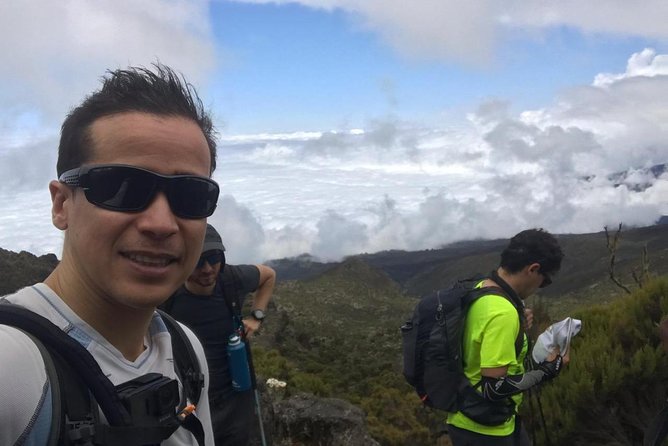
- The Lemosho route is a scenic and less crowded path to the Kilimanjaro summit, with a gradual ascent to enhance acclimatization and summit success rate.
- A packing list for the Kilimanjaro trek includes essential layered clothing, sturdy hiking boots, and accessories like trekking poles and headlamps.
- The 7-day Lemosho itinerary involves ascending through rainforests, reaching the Shira Camp, trekking to Lava Tower, descending to Barranco Camp, and finally summiting Uhuru Peak.
- Essential gear for the Kilimanjaro climb includes warm, layered clothing, sturdy hiking boots, a warm sleeping bag, and sun protection.
- Proper acclimatization, hydration, balanced meals, and adequate rest are crucial considerations for managing altitude sickness during the Kilimanjaro trek.
Overview of the Kilimanjaro Lemosho Route

The Lemosho Route is one of the most scenic and less crowded paths to the summit of Kilimanjaro. This 7-day route approaches the mountain from the west, offering stunning views of the surrounding landscapes.
Trekkers ascend through forest, moorland, and alpine desert before reaching the crater rim. The gradual ascent allows for better acclimatization, increasing the chances of reaching the 19,341-foot summit.
With its diverse ecosystems and gradual incline, the Lemosho Route provides an unforgettable Kilimanjaro experience for adventurous hikers.
Along the way, climbers are supported by experienced guides, porters, and a cook, ensuring a safe and enjoyable journey to the roof of Africa.
You can also read our reviews of more tours and experiences in Moshi.
Packing List for the Kilimanjaro Trek
Packing the right gear is crucial for a successful Kilimanjaro trek. The essentials include base layers, insulating mid-layers, weatherproof outer layers, sturdy hiking boots, and a durable backpack. Plus, you’ll need sleeping gear, personal items, and specialized equipment like trekking poles and headlamps.
| Essentials | Cold Weather | Accessories |
|---|---|---|
| Hiking Boots | Fleece Jacket | Sunglasses |
| Base Layers | Down Jacket | Trekking Poles |
| Backpack | Warm Hat | Headlamp |
Packing strategically and considering the climate changes at different elevations is key to staying comfortable and prepared throughout the journey. With the right gear, you’ll be well on your way to conquering the highest freestanding mountain in Africa.
Day-by-Day Itinerary of the Lemosho Trek
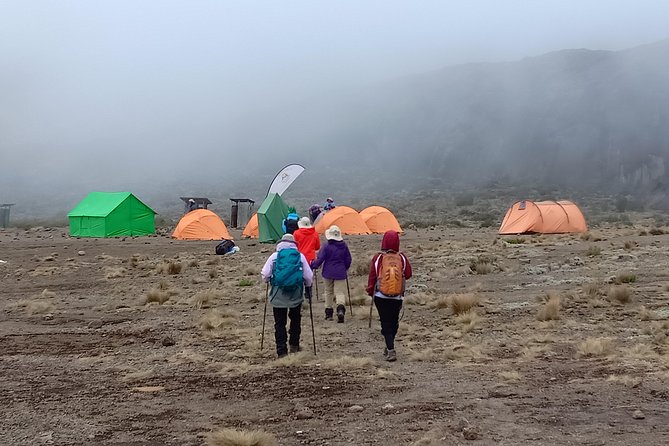
The Lemosho route is a popular choice for those seeking to conquer Kilimanjaro. This 7-day trek begins at the Lemosho Glades and winds its way through diverse landscapes, from lush forests to barren alpine deserts.
On the first day, hikers ascend through the rainforest. Day 2 brings a gradual climb to Shira Camp, while Day 3 leads to Lava Tower. The trek then descends to Barranco Camp on Day 4.
Hikers tackle the Barranco Wall on Day 5, followed by a steep ascent to Karanga Camp. Summit day on Day 6 is the most challenging, but the stunning views from Uhuru Peak make it all worthwhile.
The final descent on Day 7 takes hikers back to the trailhead.
Essential Gear for the Kilimanjaro Climb
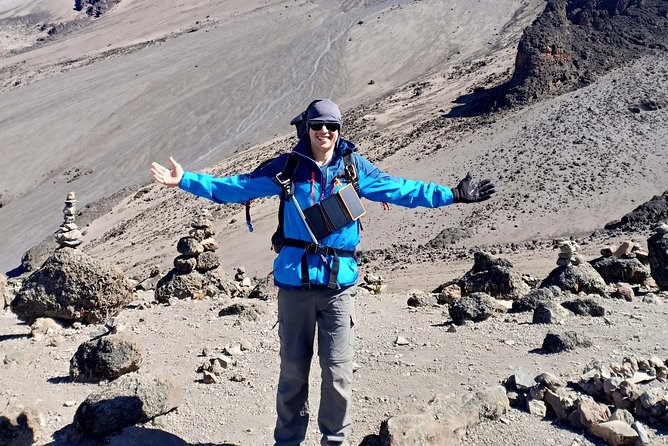
Gearing up properly is paramount for a successful Kilimanjaro trek. Climbers should pack quality, durable gear that can withstand the mountain’s varying weather conditions.
Essential items include warm, layered clothing, sturdy hiking boots, a warm sleeping bag, a headlamp, and a water bottle or hydration system. Trekkers should also bring sun protection like sunglasses, sunscreen, and a hat.
Other crucial gear includes trekking poles, a daypack, and personal first-aid supplies. It’s best to test gear before the climb to ensure it functions properly.
With the right equipment, climbers can focus on the challenging but rewarding journey to the summit of Kilimanjaro.
Acclimatization and Health Considerations
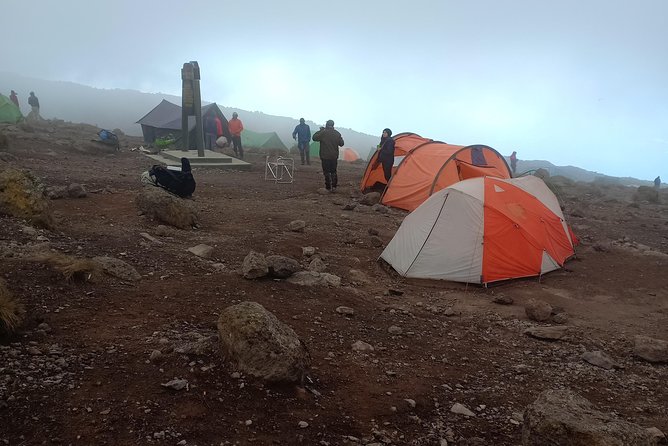
Proper acclimatization is crucial for a successful Kilimanjaro climb. The gradual increase in elevation during the Lemosho route allows climbers to adapt to the lower oxygen levels, minimizing the risk of altitude sickness.
Some key health considerations include:
-
Hydration: Drink plenty of water to stay hydrated and avoid dehydration, which can exacerbate altitude-related issues.
-
Nutrition: Consume a balanced diet with high-calorie, nutrient-rich meals to fuel the body during the demanding trek.
-
Rest: Allow for adequate rest and recovery between trekking days to support the acclimatization process.
-
Medication: Consult a doctor about medications like acetazolamide, which can help manage altitude-related symptoms.
Porters and Crew on the Kilimanjaro Trek
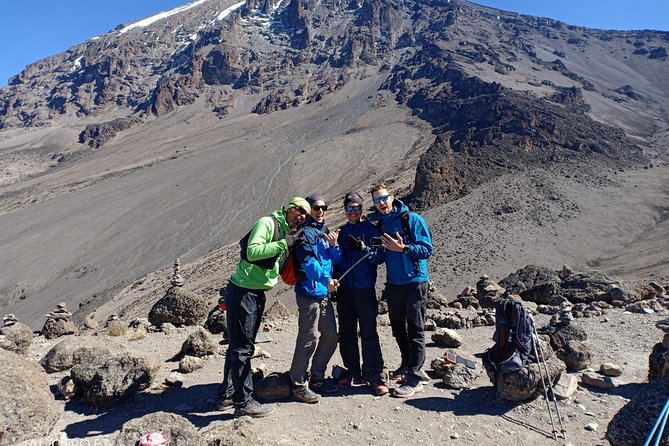
One of the critical components of a successful Kilimanjaro climb is the team of porters and crew who support the trekkers. These experienced individuals carry the bulk of the gear, food, and equipment, allowing climbers to focus on the challenging ascent.
They also set up the campsites, prepare meals, and provide invaluable guidance along the way. The porters’ salaries are included in the tour price, ensuring they’re fairly compensated for their essential contributions.
Responsible tour operators prioritize the ethical treatment of porters, providing them with proper equipment, fair wages, and safe working conditions. Trekkers are encouraged to show their appreciation through tips at the end of the climb.
Logistics and Meeting Details
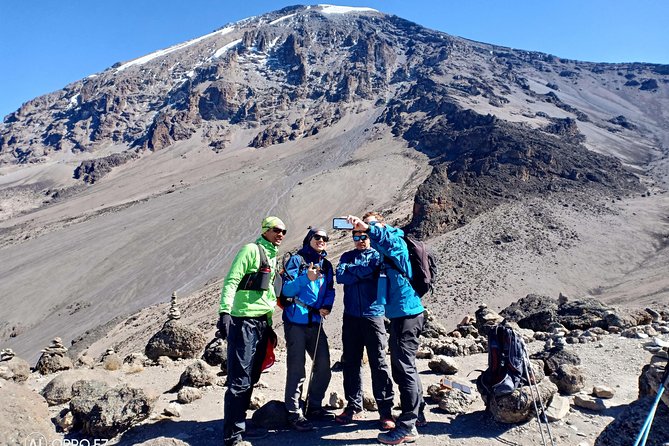
The Kilimanjaro Experience tour provides convenient pickup options, including from the airport, with a scheduled start time of 8:30 am. This ensures a smooth and efficient start to the adventure.
The tour isn’t wheelchair accessible, but it’s located near public transportation, making it easily accessible for most travelers.
It’s important to note that the tour isn’t recommended for those with back problems, pregnancy, or serious medical conditions, as a moderate level of physical fitness is required.
The tour accommodates a maximum of 100 travelers per activity, ensuring a personalized experience.
Here are 4 key things to know:
- Pickup points available, including airport.
- Start time: 8:30 am.
- Not wheelchair accessible, but near public transportation.
- Moderate physical fitness level required.
Frequently Asked Questions
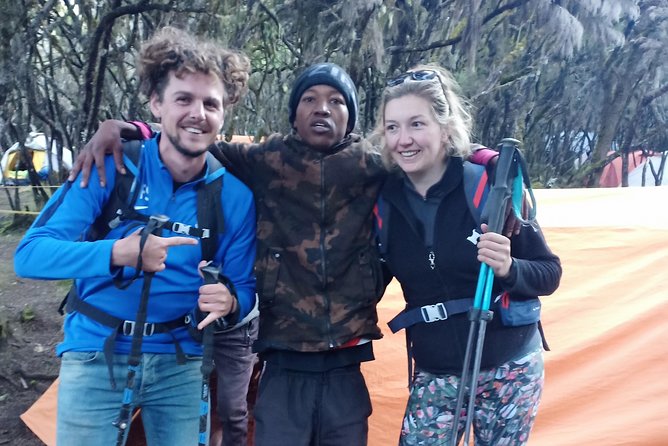
Travelers commonly ask about various aspects of the Kilimanjaro Experience tour.
What equipment do I need? Hikers should bring warm layers, sturdy hiking boots, a headlamp, and a water bottle.
Can I rent gear? Yes, the tour provider offers rentals for items like trekking poles and sleeping bags.
How difficult is the Lemosho route? It’s considered one of the more challenging Kilimanjaro routes, requiring a moderate fitness level.
What if I get altitude sickness? The guides are trained to monitor for and manage altitude-related issues.
How much should I tip the crew? It’s customary to tip the guides, porters, and cook at the end of the trek.
Frequently Asked Questions
What Is the Best Time of Year to Climb Kilimanjaro?
The best time to climb Kilimanjaro is during the dry seasons, usually from July to October and December to March. These periods offer the most stable weather conditions and the highest chances of reaching the summit.
Can I Book the Trek for a Smaller Group?
The operator offers group tours, but travelers can book a private trek for a smaller group as well. The minimum group size is 2 people, and the maximum is 100 travelers per activity.
Do I Need Any Special Vaccinations for the Climb?
While specific vaccination requirements can vary, it’s generally recommended to consult a travel health specialist before your Kilimanjaro climb. They can advise on any necessary vaccines or preventative measures to ensure your safety and well-being during the trek.
What Is the Maximum Group Size for the Kilimanjaro Trek?
The maximum group size for this Kilimanjaro trek is 100 travelers. The overview states that there’s a "maximum of 100 travelers per tour/activity", so groups are capped at that size to provide a comfortable and manageable trekking experience.
Can I Extend the Trek to Include a Safari Afterward?
Yes, you can extend the trek to include a safari afterward. The experience offers optional tours, such as a short safari, that can be added after the Kilimanjaro climb.
The Sum Up
The 7-day Kilimanjaro Lemosho Route offers trekkers an unforgettable adventure through Tanzania’s diverse landscapes. With an experienced team, a gradual ascent, and a focus on health and safety, this trek promises an enriching journey to the summit of Uhuru Peak. Participants can expect to traverse lush rainforests, stark alpine deserts, and witness the iconic beauty of Kilimanjaro.
More 7-Day Experiences in Moshi
More Tour Reviews in Moshi
Not for you? Here's more nearby things to do in Moshi we have reviewed
- Day Trip To Tarangire National Park
- Mountain Kilimanjaro Climbing 6 Days Machame Route
- 6 Days Rongai Route Climbing Mt.Kilimanjaro
- 7-Day Kilimanjaro Climb Machame Route
- 7-Days Tour Mount Kilimanjaro Trekking via Machame Route
- Kilimanjaro: Lemosho Route and Camping Safari
- 8 Days 7 Nights Private Lodge Safari
- 5 Days Comfort Safari in Tanzania
- 2 Days Lodge Safari.
- One Day Tanzania Safari – Tarangire or Arusha National Park
- Day Trip Lake Manyara
- Mt.kilimanjaro-machame Route
